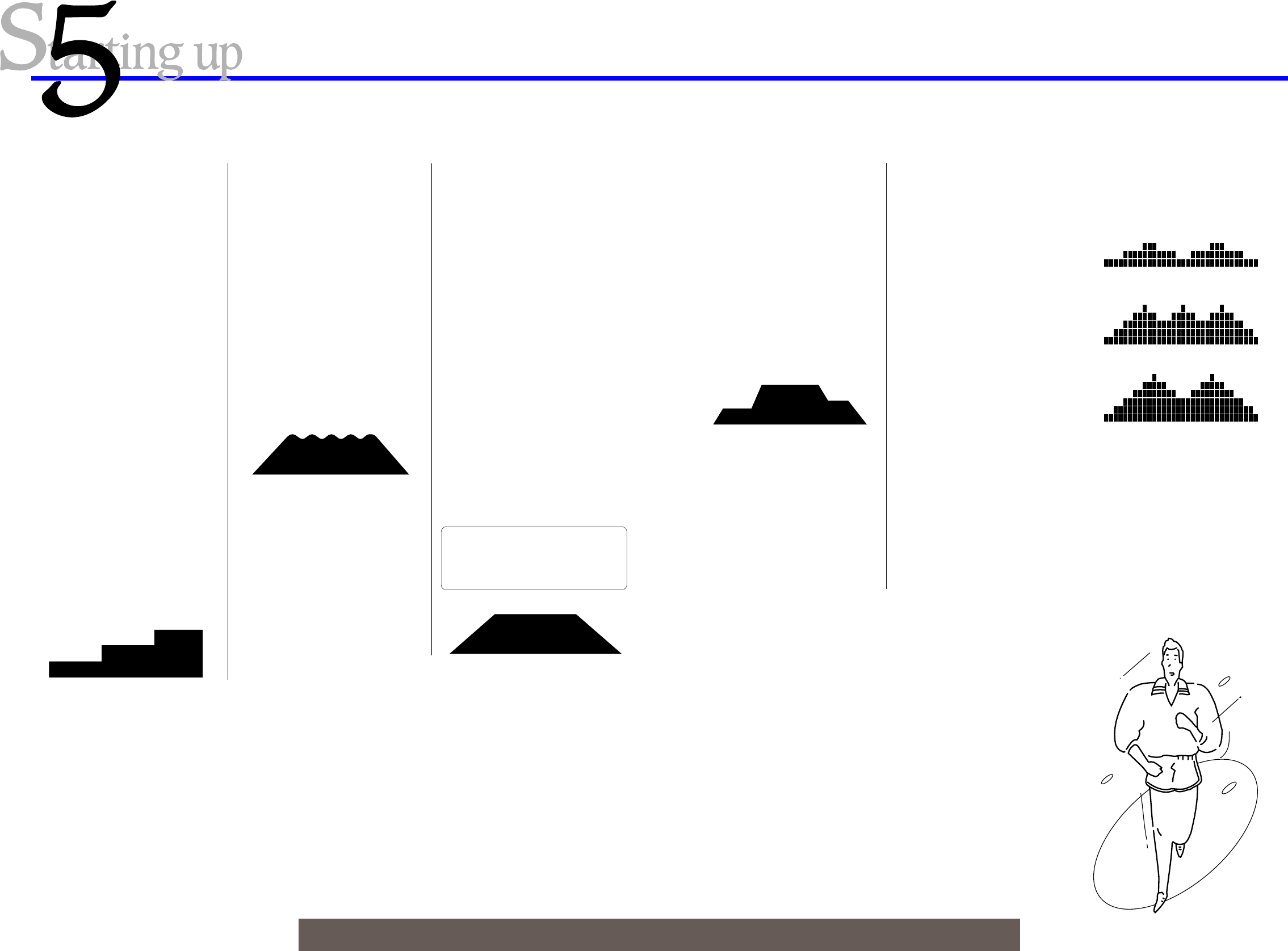
14
1. Aerobic power
measurement
(physical fitness test)
• Over a period of 10 minutes, you
will encounter three different levels
of pedal resistance. Your pulse will
change in response to the different
levels of resistance, and this change
in pulse will be used to calculate
your overall fitness level, also ex-
pressed is MOU (VO
2
max). MOU
stands for maximum oxgen uptake.
The higher your overall fitness
level, the greater your endurance.
• Your MOU value is compared with
the MOU values of other people
who are the same age and sex as
you. You are given a physical
strength number from 1 to 5 de-
pending on how you rank.
• These results should give you a
good idea of your own fitness level
and help you to determine what sort
of training program will be the most
effective for you. For information
on how to choose a training pro-
gram, refer to "Your strength level
and training index" on page 20~23
in the Operation section on this
booklet.
2. Automatic training
(training at a constant pulse
rate)
• You set the pulse rate at which you
want to exercise and the Model EC-
1200 automatically adjusts pedal re-
sistance to maintain that pulse rate.
This is an ideal basic form of aerobic
training.
• As you repeat the exercise at a cer-
tain pulse rate and make progress in
your fitness level, you will be able to
create a greater work intensity un-
der the same pulse rate. Further,
you will be able to try exercising at a
higher target pulse rate.
3. Isopower training
(training at a constant
energy expenditure)
• The figure for energy expenditure
that is shown on the screen of the
Model EC-1200 is calculated from
pedal resistance (kg·m) and cadence
(rpm).
• In isopower training, you set the de-
sired energy expenditure in watts.
The Model EC-1200 takes into ac-
count your cadence (rpm) and ad-
justs pedal resistance (kg·m) auto-
matically so that energy expendi-
ture in watts remains constant.
• This type of training is also called
constant load, and is often used in
cardio-vascular rehabilitation.
Control range:
cadence: 40~100 rpm
wattage: 25~200 watts
The five programs of operation
NOTE: If you set your target
wattage as under 50 watts, con-
trol limit of cadence (rpm) be-
comes under 100 rpm.
WORK RATE
PULSE RATE
TORQUE
15
PRF-1 the Apennines
PRF-2 the Cascades
PRF-3 the Pyrenees
5. Hill profile training
(training by cycling up
mountains)
• Pedal resistance changes over time
to simulate the effect of cycling in
the mountains. All changes in pedal
resistance are shown on the screen.
• There are three types of mountain
profile as follows:
PRF-1 the Apennines (Italy)
PRF-2 the Cascades (U.S.A.)
PRF-3 the Pyrenees
(France, Spain)
• The mountain profiles from 1 to 3
are arranged in order of ascending
difficulty. Do not strain yourself,
but rather enjoy the form of each
mountain.
• The initial setting of the exercise
time is 16 minutes. You can either
increase or decrease the training
time, in which case the over all hill
pattern will not be changed, but
shortened or stretched horizontally
in proportion with the designated
time.
4. Manual training
(training at a constant pedal
resistance)
• You choose the pedal resistance
(torque:kg·m), and it stays constant.
This is the most traditional way in
which stationary bicycles have been
used.
Torque setting range:
0.5~4.0 kg·m
Minimum graduation: 0.1 kg·m
TORQUE


















